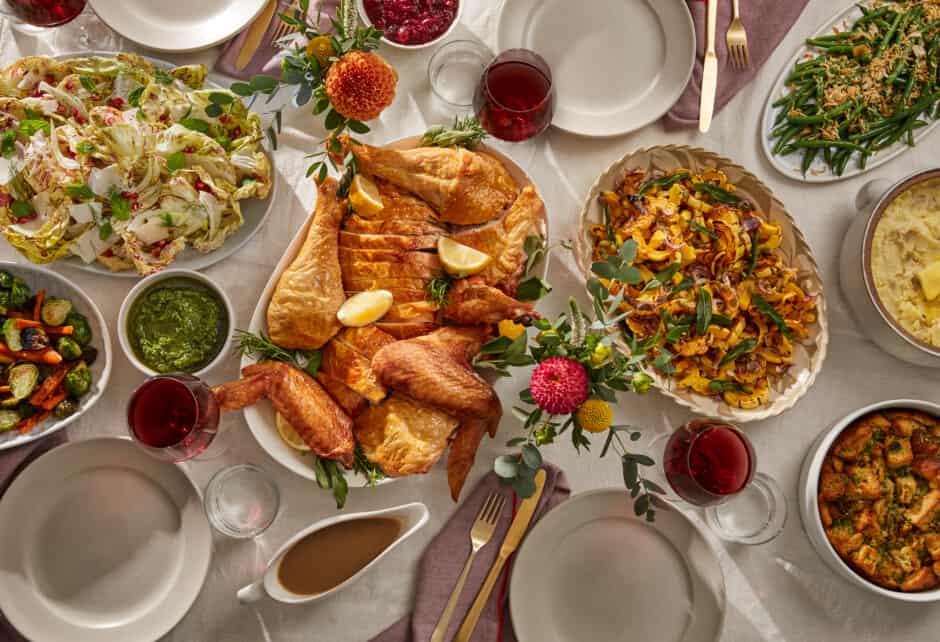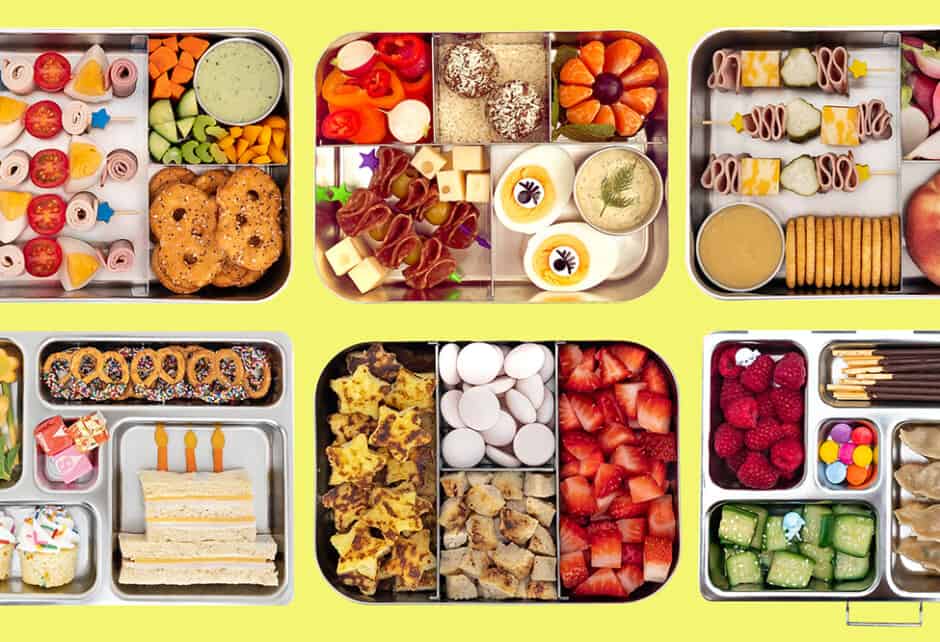
How To Teach Proper Table Manners to Kids
Written by Erin Feher
Photography by PHOTOGRAPHED BY BRIDGET WOOD
No matter which holidays you celebrate in your household, we are betting they are féted with a few big family meals. Holiday feasts are the perfect opportunity to have conversations with kids about what makes breaking bread together so special—that it’s not just about filling our bellies, but connecting with each other and sharing what we have with those we love. It’s also an ideal time to talk table manners, and why actions like setting the table, complimenting the host, and saying “please” and “thank you” aren’t just arbitrary rules we follow to be fancy, but expressions of kindness, gratitude, and empathy. Sunita Padda is an etiquette expert and founder of Manners&Co., a company focused on teaching dining and social manners to kids through interactive learning (we love the brand’s table etiquette place mats and kid-friendly conversation starter flash cards). We asked Sunita to share with us the basic manners she believes all kids should learn from a young age, along with some expert advice on how best to teach little ones for lasting results!
Wait for everyone to receive their meals. “This is a tough one for even adults sometimes. With the exception of larger events such as weddings, it’s important to teach children to wait for everyone to receive their meals before starting their own. This is included on our Manners&Co. TableMat, and for good reason: Explaining how those who are still waiting for their food may feel allows kids to understand the rule from a different perspective. Using words such as ‘uncomfortable’ or ‘shy’ will help them understand the feelings.”
Include everyone in mealtime conversations. “Gone are the days where children are expected to stay invisible at the dinner table. It’s important to show them what meaningful conversations look like and how to make everyone at the table feel welcomed. I created our TableTalk Conversations with just this in mind! Asking open-ended questions from a variety of topics is key to keeping the conversations alive at the table. In other words, asking ‘How was school?’ will undeniably result in a murmured response of ‘Good…’ Questions such as, ‘If you could create a festival in our city what would it look like?’ will spark much more imagination and lead to other conversations! Explaining why it’s important to make everyone at the table feel a part of the conversation is another way to build social empathy.”
Try a little bit. “It’s common for kids to be picky, but positively encouraging them to try foods they might not like simply because they may just like it this time is a great way to expand their taste buds. In our home, I give the example of mushrooms. I absolutely hated mushrooms until someone convinced me to try some in a pasta dish. That’s when I fell in love with them! The mushrooms were sautéed and deliciously garlicky! But I would have never known I could like them if I didn’t try them again. The way someone cooks, or prepares, an ingredient or dish can drastically change the way it tastes. Explaining this to kids is important, and trying only a little bit is a great way to give the food a chance without offending the host or creating any wasted food. How can children politely decline foods? Unless there’s a restricted food or allergy, they can say, ‘I’ll try a taste, please.’ This way, they are still trying the food, but are not committing to it, since there’s only a little bit to start.”
Ask to be excused. “It can be difficult to keep kids at the table after they have eaten, and in the case of teens, once they have speedily scarfed down their food! I recommend implementing an activity that will help them understand that the table is for more than simply eating; it’s for talking, sharing, and bonding as a family. Having a conversation flowing will help them understand this. And when you need to bring in the rules, explain that we ask to be excused only once everyone is finished eating. This avoids making others feel rushed or creating an ’empty’ atmosphere at the table.”
Always say please and thank you. “Make please and thank you the norm from a young age. I have seen toddlers use the terms automatically, which means there’s no reason older children shouldn’t be able to make the terms consistent in their everyday language. If it’s becoming difficult to enforce, do not respond to requests unless they are asked in a polite fashion. ‘I want chips’ doesn’t warrant a response or action in our home. The boys quickly learned that ‘May I have some chips, please’ was the only way they would receive a response from us. It takes time, especially if this is new to children, so be patient with them and always explain how speaking politely creates a positive environment around them.”
Help with age-appropriate jobs. “Just because children may not be at the age to help cook or wash dishes, doesn’t mean they can’t help create a wonderful dinner atmosphere. Smaller children could place bread in baskets or lay out name cards for more formal dinner settings. Whatever the role, creating anticipation around mealtime is a great way for children to see the social importance and how dinnertime goes beyond filling our tummies!”
Learn how to set the table. “In my 10 years of teaching, I have never had a student (or adult!) be able to correctly set a formal 3-course meal setting in the first try! With so many utensils it can be quite daunting. However, it’s so important to have children know this basic skill, which will take them into adulthood (hello corporate dinners or weddings!). A visual representation is the best way for younger children to mimic and remember where everything goes. The Manners&Co. TableMat does a great job of visually showing children where everything on the table goes, while also being fun and colorful with it’s branded monsters. Table settings are an easy and safe chore that children can start from even a young age!”
Mind your elbows. “There’s a lot of attention on elbows at the table and what the correct rule is. While, yes, it’s true, there should be no elbows on the dinner table, there is a slight exception. When no food is on the table, perhaps after clean-up, you are allowed to lean in for conversations using your forearm on the table, up to the elbow. This is particularly helpful in loud restaurants when you’re trying to have an intimate conversation (or simply hear one another). For the sake of children, we do recommend starting them on the ‘no elbows at the table rule and you can always gradually explain the exception when they’re older.”
Compliment the host. “Regardless of how you really felt about a dinner, it’s important to find at least one thing to compliment the chef on. Explain to children the amount of work that goes into hosting a dinner—they’ll understand this once they’re involved in helping/doing chores during your own family dinner party!—and how a compliment can go a long way in making someone feel appreciated. A compliment can be anything from refreshment selections, the meal, or a beautiful table arrangement.”
Depart with gratitude. “Since Manners&Co. focuses on children, we spend a lot of time on articles pertaining to playdates! And just like in those pieces, I’ll explain how important the ‘departure’ is. ‘Thank you for having me’ is such an important quote. It shows that your child is grateful for the invite and has appreciated the hosts efforts. Whether it’s a dinner or even a snack—gratitude is key in building social empathy!”
For more family entertaining tips, check out Beautiful Tabletop Essentials for the Holidays and Beyond, How to Create An Instagram-Worthy Tabletop and Delicious Veggie Recipes From a Family’s Trip Around the World.
Write a Comment
Share this story





Check out our knives and forks to help kids in getting to grip with their cutlery and our Conversation Cards to get all ages chatting around the table! x